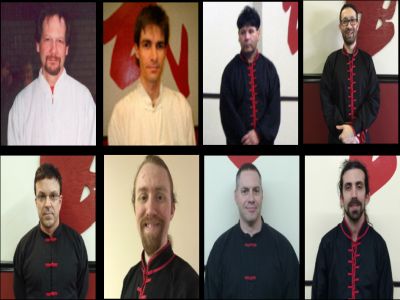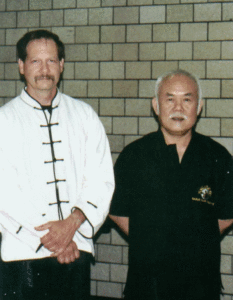
I was always interested in martial arts when I started grade school. There were always your typical bullies growing up who would pick on you, take your lunch money, and threaten you with physical harm. I was a small, skinny kid and tried to avoid them at all costs… even to the point of walking home from school following different routes.
Then, one day, I was watching the Olympics and saw a Judo match on the old black and white TV. I was intrigued and wanted to learn more about it. I rode my bike to the local W.T. Grant store (the Walmart of that time) and went to the book section. I found a book on Judo by Bruce Tegner, bought it, and hurried home to study the moves.
In my room, I opened the book and began to try to mimic the pictures. The techniques made sense, but I had no idea if I was doing the moves right without a partner. What I learned was leverage and using your opponent’s aggressive nature against them. The biggest thing I learned was that you cannot learn from a book.
When I was 15, a karate school opened in Allentown, PA. Several of my friends and I decided to go and check it out. It was somewhat scary because we did not know what to expect. It helped, though, because we did know someone at the school. We all took our first trial class together, and I fell in love with the martial arts.
Later, I was introduced to a master of martial arts. At that time, it was a big deal because there were only about three masters in the entire state of PA. It was scary, and his classes were tough.
Here was the fantastic thing: I still never knew anything about Kung Fu or Tai Chi. One day, during a training session with the master, he introduced us to a few Kung Fu techniques. We used these for self-defense, and he stated that this was the origin of all martial arts. I was blown away by how easily these techniques could handle attackers, and Kung Fu used the same principles that I learned studying that Judo book: use the opponent’s force against them.
One day, the master approached me and said, “You’re driving me to Pittsburgh because I want to meet Grandmaster Pai and train with him. What? A Grandmaster of Kung Fu.” Don’t forget I knew only a few Kung Fu techniques. I never saw the full breadth of techniques involved with Kung Fu. Yes! We met Grandmaster Pai of White Dragon Kung Fu in Pittsburgh, and after he broke some blocks of ice, I was astounded. I heard about this type of power and never saw it. From that moment on, I started learning Kung Fu, and it became my passion to learn everything that I could.
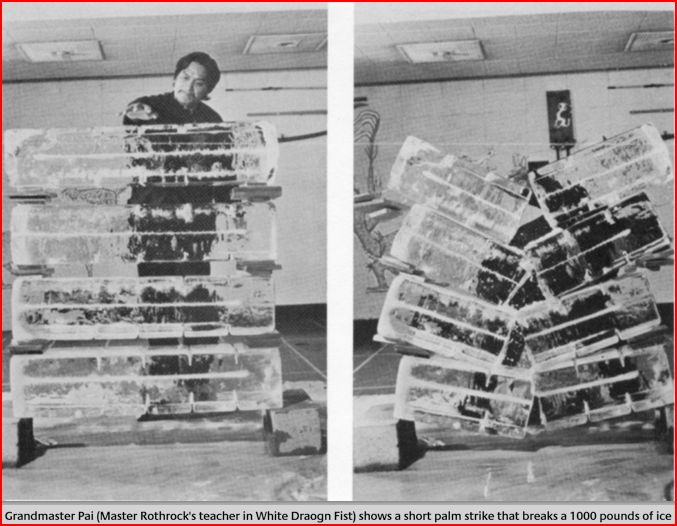
At that time, Bruce Lee came out with his movie Enter the Dragon. We were asked to do a demonstration at the outdoor drive-in. When the movie started, I was blown away by the quick techniques that showed the power and effectiveness of Kung Fu. It was not people battling it out for 30 minutes.
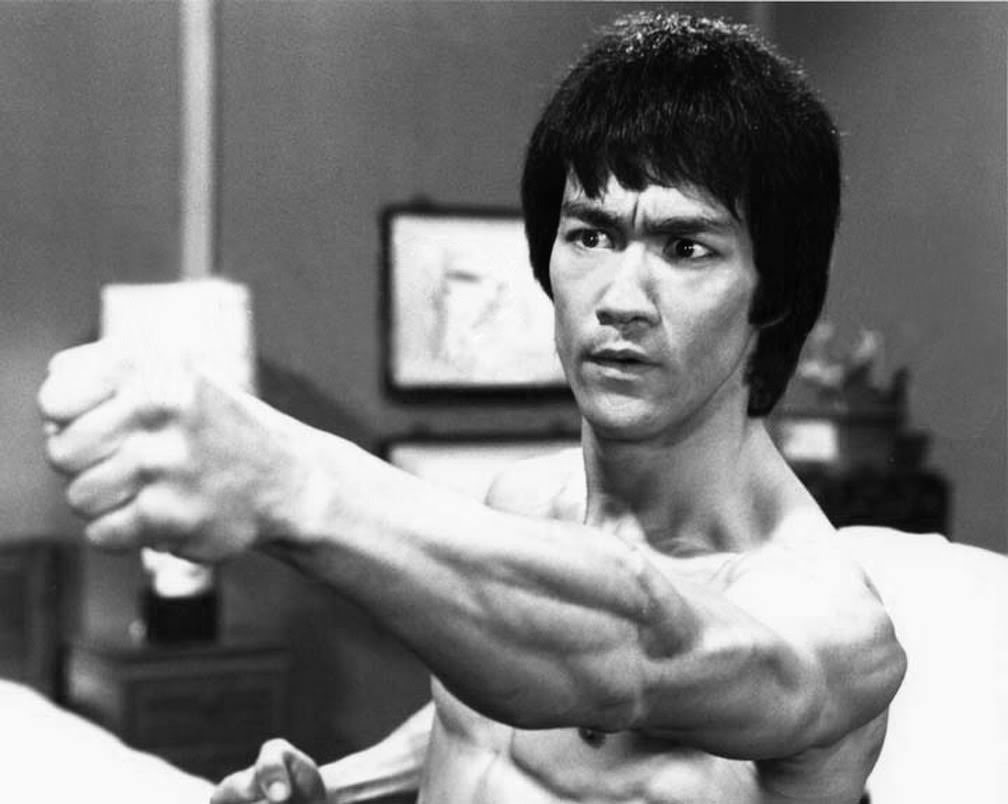
Later, Jackie Chan’s movies became popular. He concentrated on some specific Kung Fu styles and the ancient masters and their teaching methods. Of course, he was always the student trying to learn from a tough master. The movies always started with strengthening his body and improving his flexibility before he could learn whatever style the film was based on. Snake in the Eagle’s Shadow was the first one I ever saw in Chinatown, New York. I went to the first showing on the first day it came out. I thought I would be early, but the line was 4 New York City blocks long when I got to the theater. If you get a chance, check it out.
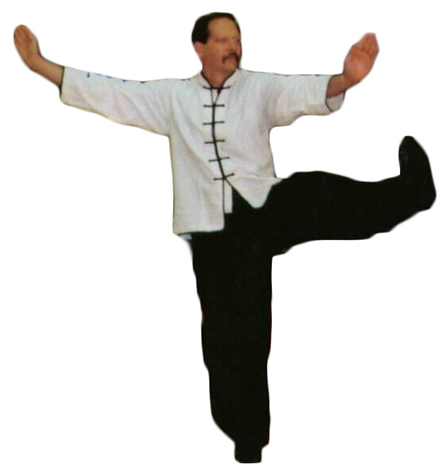
A few years later, I started hearing rumors about another Chinese martial art called Tai Chi. Everyone was telling me that this was the Grand Ultimate of martial arts. I eventually learned that Tai Chi means Grand Ultimate.
At the time, I had three part-time jobs and going to college. I was taking two majors: Physics and Chemistry. Back then, you had attendants to pump your gas, wash your windows, and check your tires and oil. I was that guy. A car pulled in, and as I walked over to the driver, I noticed that the driver was one of the female black belts at the school. She told me that she was leaving town and handed me an old book in Chinese with lots of pictures of an old Chinese master doing Tai Chi. I went home and tried to mimic the photos in the book. But as I learned, you cannot learn from a book. Eventually, I met a student at the school who discovered a Chinese master teaching Tai Chi at one of the local universities. I started taking classes there, too.
Still going to college and working, I was busy. Where I was going, Moravian College started a self-defense program for the women there. They preferred Judo, so that’s what I was teaching. That created a passion within me to start teaching martial arts.
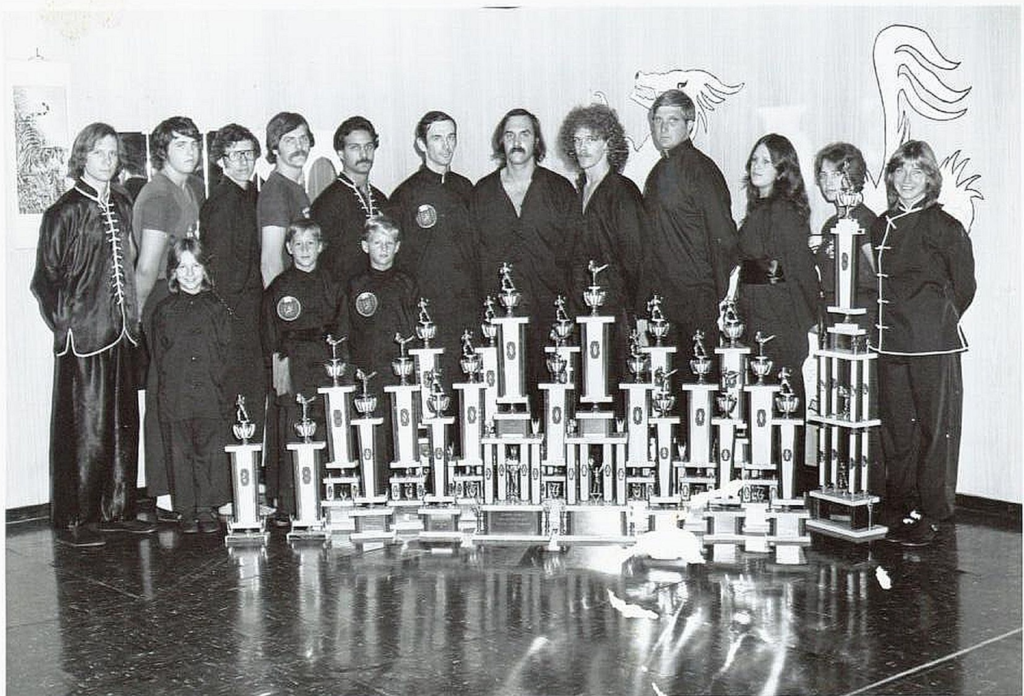
In 1972, I opened a Kung Fu and Tai Chi Academy in Scranton, PA. It was tough in the beginning, with little money, in a strange town, and no friends. I slept on a wooden floor in the school. I had to take cold water showers because I didn’t have a water heater. It was rough, but I had a dream and loved the students I taught.
I trained with several instructors in slightly different styles, including Master Colvin Northern Shaolin Kung Fu, Praying Mantis in Washington D.C., Grandmaster Willy Lin (Yang Tai Chi), and White Crane in Chinatown, New York. In 1974, I opened my second school in Wilkes Barre, PA. The Wilkes Barre School was on the third floor and was an old ballet school. It was perfect, and that’s where I started my Demo/Competition team, which became unbeatable on the East Coast.
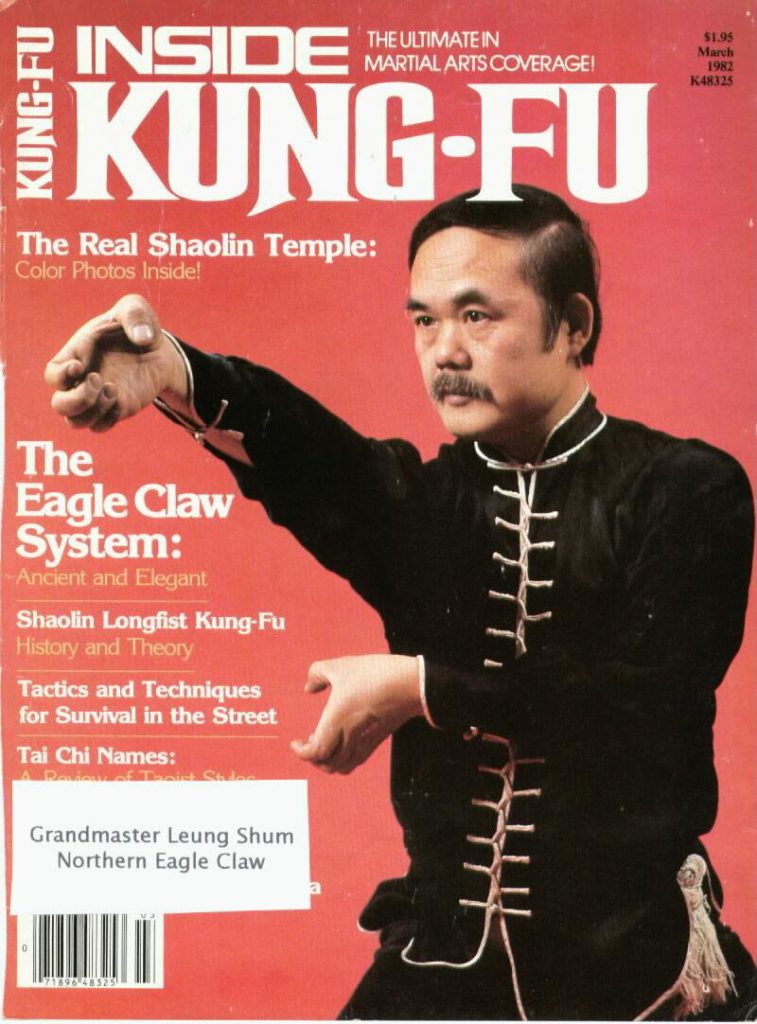
I was at Henry Cho’s tournament at the Madison Square Garden in New York one day. He had a small Kung Fu competition division (usually in a hallway because they didn’t like Kung Fu). One of the competitors did a fantastic Eagle Claw Kung Fu routine that I had never seen before. I found out who his teacher was and where he was in New York City.
I called a few days later and made an appointment to visit. The following weekend, I drove the two and a half-hours to New York. When I arrived, I was greeted with a display of kung fu that I had always seen in the popular kung fu movies then. Students were doing routines, 2-person fighting sets, various weapons, and even the traditional Lion Dance in the corner.
Grandmaster Shum came over and sat down next to me. I had my duffle bag, and I was ready to start. He looked at me and said, “You like what you see.” I said, “Yes! It’s fantastic.” He replied, “Okay, you come back next week.” Wow! I drove two and one-half hours for 5 minutes.
The following week, I drove to New York again. I had my duffel bag and money. I had no idea what I would pay, but I did not care. I arrived, sat in a chair, and started watching. A few minutes later, Grandmaster Shum sat down next to me. He said, “So you come back.” I just nodded. He continued, “Okay, five hundred dollars.” I was expecting that. Don’t forget this is 1975. I was ready, though. Like I said, I was prepared. I took out the cash from my pocket and handed it over (no credit cards back then for Kung Fu classes). After I gave him the money, he said, “Okay, you come back next week.”
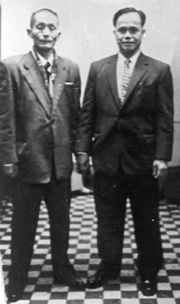
In 1980, I traveled to Hong Kong with Grandmaster Shum to meet his teacher, the Great Grandmaster Ng Wai Nung. He took me to the school where he trained. It was on the roof of a four-story building. There were several students there working out. The Great Grandmaster asked me to perform several routines and other tests of strength and endurance.
When I was finished, he asked me to return the next day. He awarded me my Master’s Certification. Unlike most certificates on paper, this one was a handmade cloth scroll.
In 1986, I moved to Pittsburgh and opened my third school. Eventually, I opened schools in Wexford and West Mifflin. I have also helped some of my other Black Belts open schools, the latest being in Butler.
I’ve written 6 books on Kung Fu and Tai Chi… and produced over 20 different DVDs.
-The Beginner’s Guide to Kung Fu
– The Secrets of Kung Fu
– Kung Fu for Little Dragons
– A Simplified Guide to Tai Chi
– A Master’s Handbook on Eagle Claw Kung Fu
– An Instructor’s Teaching Guide for Kung Fu & Tai Chi
One of my goals is to make sure that everyone who comes to the Academy has an excellent experience. Even after 50 years of teaching, I still enjoy working with people to help them achieve their goals. Nothing brings more joy than seeing a big smile on someone’s face when they accomplish something they never thought possible.
Several Awards
2005 – Voted Best Martial Arts School – (readers of the Gateway Star)
2006 – Voted Best Martial Arts School – (readers of the City Paper)
2007 – Voted Best Martial Arts School – (readers of the Tribune Review)
2008 – Voted Best Martial Arts School – (readers of the Tribune Review)
2009 – Voted Best Kung Fu School – (readers of the City Paper)
2009 – Voted Best Martial Arts School – (readers of the Tribune Review)
2010 – Voted One of the Kung Fu & Tai Chi School – (City Paper)
2010 – Voted One of the Best Martial Arts Schools – (Tribune Total Media)
2011 – Voted One of the Best (Gold) Martial Arts School – (Tribune Review)
2012 – Voted the Best Martial Arts School – (readers of the Tribune Review)
2013 – Voted the Best (Gold) Award – (readers of Trib Total Media)
Professional Memberships
– The National Association of Professional Martial Artists
– The Martial Arts Teachers Association
– The Martial Arts Industry Association
– The Ying Jow Pai Association.

Originally, Kung Fu was used for exercise by the monks in the Shaolin Monastery in 500 AD. After long periods of meditation, their bodies grew weak. They studied five different animals to develop a complete exercise program: The Tiger for Strength, The Leopard for Sinews, the Crane for Leg strength, the Snake for Breathing, and the Dragon for waist and lower back. When they were attacked by bandits, they could also use these techniques for defense.
Tai Chi developed in the 1600s by combining the actions of the Crane with the breathing and the smooth, graceful movements of the snake.
When I first started training, classes were several hours long. My schools were open for 24 hours. There were always people working out. Of course, we only had 3 TV stations, no internet, and no video games. However, with our busy lifestyles today, most people cannot devote that much time to working out, staying healthy, and learning some self-defense skills. So, I created classes that are 30 to 45 minutes in length.
This was a complicated feat. I wanted classes for beginners so anyone could enjoy them, but I also needed more advanced classes to challenge people with more advanced training as their conditioning, flexibility, and skills improved.
The Kung Fu classes consist of Kung Fu flexibility exercises, special breathing to keep the internal organs healthy, traditional hard-hitting Kung Fu basics, aerobic kickboxing for quick reflexes, and combat-ready self-defense to handle any attacker. Classes are geared toward getting you in shape fast.
Tai Chi classes are for seniors who need a less stressful workout. Tai Chi uses slow-motion postures to relieve stress and promote relaxation as you develop balance, flexibility, and strength.
I developed the Kids’ Kung Fu classes to develop 4 areas: social skills, physical skills, emotional skills, and Intellectual Skills. We use the Kung Fu (Kung Fu means to work hard toward a goal) techniques to develop these 4 areas through focus, concentration, and respect.
Many people are not sure they might want to do Kung Fu or Tai Chi… or they know that they want to do it and are not quite sure how to get started. That was my case. I always wanted to do Kung Fu and Tai Chi, but I I was a little scared to go alone. I thought! Is it going to be too hard? Am I in shape enough to do it? How long do I have to do it? Am I going to get hurt?
Then, I discovered that one of the local schools offered a Trial Course. It didn’t cost much, so my parents let me try it. I found three other friends to go with me. It was the best thing that I ever did. We would go to class, and after an exhilarating workout, we would always stop somewhere for dinner. It was always a fun night.
That’s why I always recommend the Trial Course. This is a great way to try it out and see if it’s going to work for you. So, whether you want to shape up, have your child develop more focus or discipline, or want a low-impact way to exercise and relieve stress… give the Trial Course a try. I know you’ll be glad you did.
The Finest Professional Kung Fu & Tai Chi Instructors
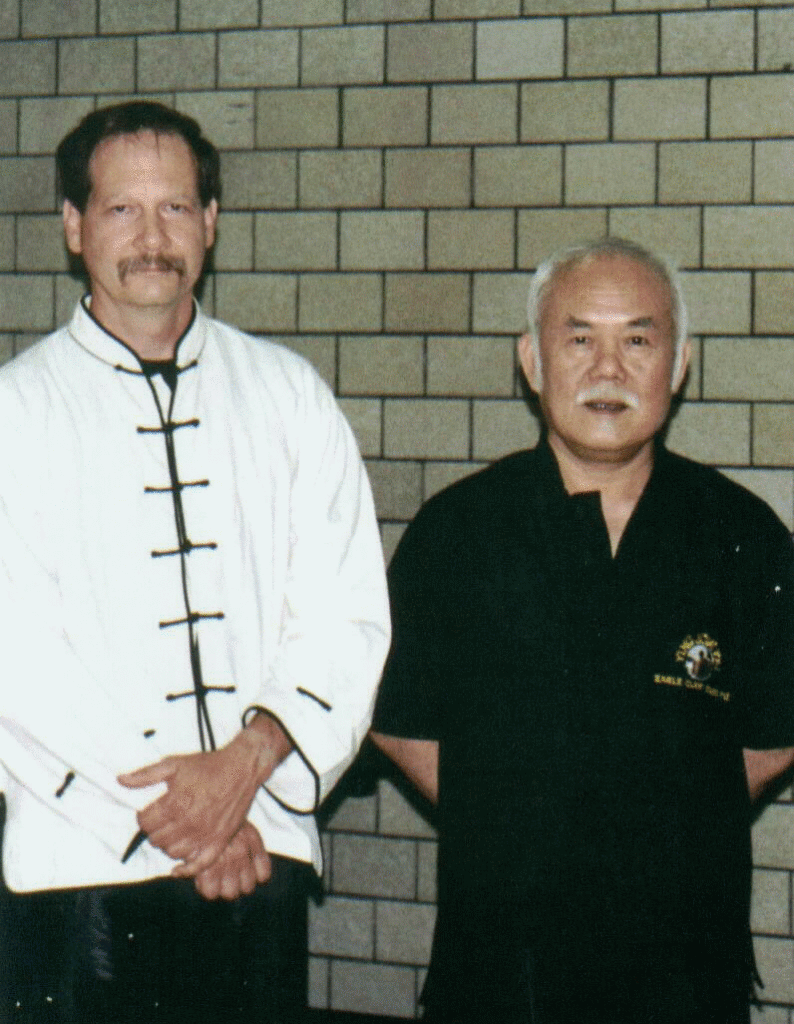
Master Rothrock has headed the academy for over 50 years, and along with his staff of expert and Professional Black Belt Instructors, we offer you a unique, safe, and fun classroom experience to meet or exceed your goals.
Many martial arts schools come and go or are part-time clubs only open a few days a week. Many instructors do this as a hobby or are not qualified to teach a martial art. Contrary to what most people believe, a black belt does not make you an instructor or teacher.
Here at the Academy, you have the assurance that we have a long history of success and have trained thousands of students over the years. We are a full-time professional Academy. Along with Master Rothrock, he has full-time professional instructors and staff dedicated to your overall goals and success.
